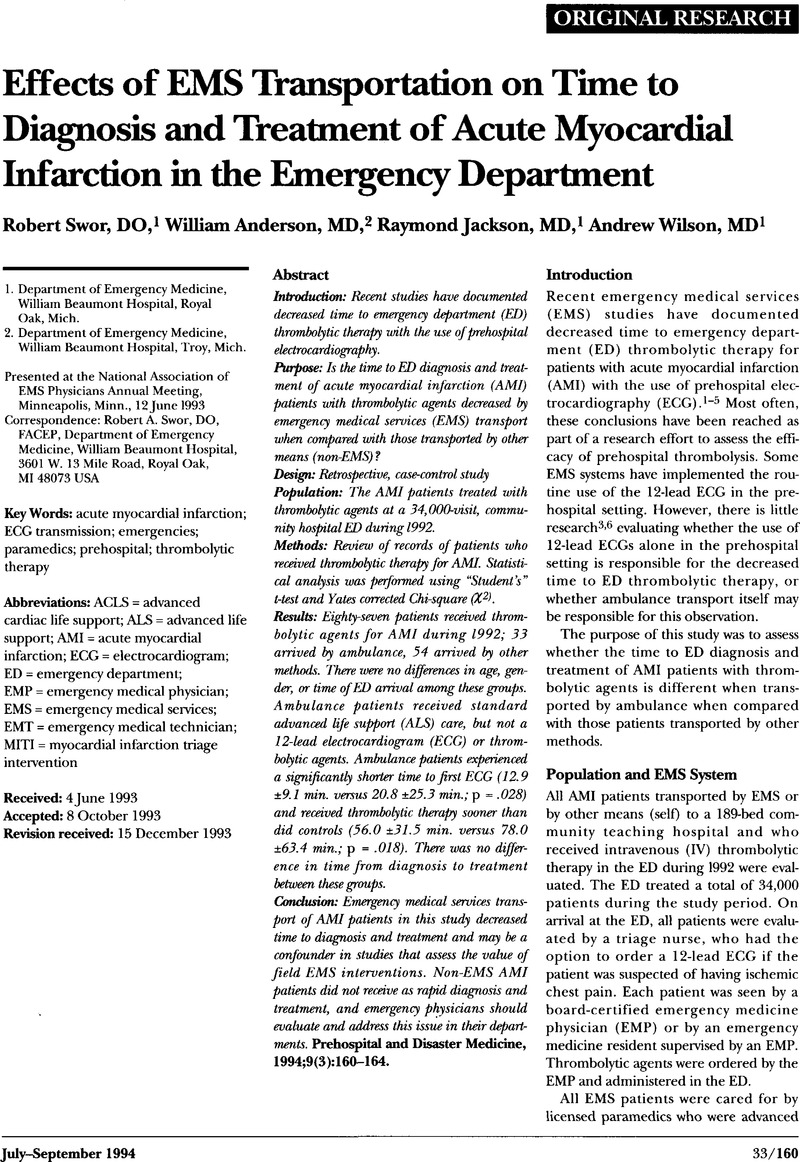No CrossRef data available.
Article contents
Editorial Comments
Published online by Cambridge University Press: 17 February 2017
Abstract
An abstract is not available for this content so a preview has been provided. Please use the Get access link above for information on how to access this content.

- Type
- Article Commentary
- Information
- Copyright
- Copyright © World Association for Disaster and Emergency Medicine 1994
References
1. Mosesso, VN, The most neglected tool in EMS: The clock. Ann Emerg Med 1993;22:1311–1312.CrossRefGoogle ScholarPubMed
2. Spaite, DW, Valenzuela, TD, Meislin, HW, et al. : Prospective validation of a new model for evaluating emergency medical services systems by in-field observation of specific time intervals in prehospital care. Ann Emerg Med 1993;22:638–645.CrossRefGoogle ScholarPubMed
3. Dracup, K, Moser, DK, Treatment-seeking behavior among those with symptoms and signs of acute myocardial infarction. In: LaRosa, JH, Horan, JJ, Passamani, ER (eds). Proceedings of the National Heart, Lung, and Blood Symposium on Rapid Identification and Treatment of Acute Myocardial Infarction. U.S. Department of Health and Human Services, National Institutes of Health, National Heart, Lung, and Blood Institute, September, 1992, pp 25–45.Google Scholar
4. Ho, MT, Eisenberg, MS, Letwin, PE, et al. Delay between onset of chest pain and seeking medical care: The effect of public education. Ann Emerg Med 1989;18:727–731.CrossRefGoogle ScholarPubMed
5. Cooper, RS, Simmons, B, Castaner, A, et al. Survival rates and pre-hospital delay during myocardial infarction among black persons. Am J Cardiol 1986;57:200–211.CrossRefGoogle Scholar


